The Complete GEO Playbook for AI Search Visibility: Winning the Age of Generative AI
I. The Generative Shift: Navigating the New Frontier of AI Search
The online discovery landscape is undergoing its most profound transformation since the invention of the search engine. We are no longer just indexing the web; we are synthesizing it. With an estimated 800 million AI-powered searches occurring weekly across platforms like ChatGPT, Claude, and Perplexity, the future of user intent and information consumption is happening right now, in the generative space.
For too long, brands have relied on legacy SEO metrics—such as rankings, clicks, and impressions—that are proving insufficient in this new environment. When an AI chatbot provides a single, synthesized answer instead of a list of ten blue links, where does the traffic come from? How do we measure brand visibility?
The answer lies in Generative Engine Optimization (GEO).
Chaos vs. Clarity: The Metric Crisis in Traditional SEO
Traditional Search Engine Optimization (SEO) thrives on predictability: a user types a query, a Search Engine Results Page (SERP) appears, and clicks are measured.
However, in the era of generative AI:
Untrackable Visibility: Many interactions occur within closed models (like conversational chat logs) or proprietary applications where web analytics tools cannot measure “impressions” or “clicks” in the traditional sense.
Citation Obscurity: While AI often cites sources (especially in tools like Perplexity or Bard/Gemini), these citations are often tucked away, requiring a second click, or sometimes, the model synthesizes information without a direct link, making attribution difficult.
The “One-Answer” Problem: If an AI model uses your content to form the final, definitive answer, you’ve achieved high visibility without necessarily receiving a direct click. The brand trust, however, is immensely valuable.
GEO is the discipline of actively measuring, optimizing, and winning visibility where search results are delivered through synthesized, natural language responses rather than ranked lists of URLs.
Defining Generative Engine Optimization (GEO)
GEO is not a replacement for SEO; it is an evolution. It’s the practice of structuring content, establishing authority, and implementing technical standards specifically for ingestion and synthesis by Large Language Models (LLMs).
Differentiator | Traditional SEO | Generative Engine Optimization (GEO) |
|---|---|---|
Primary Goal | Rank position & click-through-rate (CTR) | Inclusion in the synthesized answer & Citation/Brand Mention |
Target Audience | Search engine algorithms (Googlebot, Bingbot) | Large Language Models (LLMs) and their training/RAG processes |
Core Value | Driving traffic volume | Driving high-intent, pre-qualified traffic and brand trust |
Key Metric | Organic impressions & clicks | Direct brand mention frequency & inferred crawler activity |
II. The Cornerstone of GEO: Why Traditional SEO is the Foundation
The biggest mistake a brand can make today is abandoning its core SEO efforts in pursuit of the shiny new GEO tactics. The fundamental truth remains: AI chatbots still depend on traditional web indexing.
LLMs are sophisticated pattern matchers and synthesizers. They are not independent research engines. Their answers are derived from:
Training Data: Massive historical archives of the web, which were, at one time, crawled and indexed by search engines.
Retrieval-Augmented Generation (RAG): Real-time queries to current search indexes (like Google Search or Bing Search) to provide up-to-date and factual grounding for the response.
Therefore, for your content to be consumed by the AI, it must first be discoverable, crawlable, and deemed authoritative by the traditional search engines.
2.1. Content Authority: The Trust Signal for LLMs
The primary role of your SEO content is to act as a foundational input for generative responses.
LLMs are programmed to prioritize content that demonstrates:
E-E-A-T (Experience, Expertise, Authoritativeness, Trustworthiness): High E-E-A-T content is less likely to be hallucinated or dismissed by the model.
Citation Quality: The AI is more likely to pull key facts or definitive statements from a source that is highly cited and well-regarded across the web.
Completeness: Content that comprehensively answers a complex question (covering all subqueries) provides the AI with a single, complete source of truth, increasing the chance of that source being used in the final, synthesized answer.
2.2. The HITS Web SEO Write Advantage: Building the Authority Layer
This is where the expertise of HITS Web SEO Write becomes indispensable. Based in Pakistan, we understand that global visibility requires foundational excellence.
Our SEO and Content Writing Services are specifically designed to serve as the authority layer for your GEO strategy:
Topical Authority: We don’t just write articles; we build topic clusters and pillars that establish your domain as the definitive source for key industry topics.
Structured Content: Our content is written not just for human readability, but for machine parseability—using clear headings, bolded definitions, bulleted lists, and tables that are easily ingested by LLMs for factual extraction.
Trust Signals: We implement advanced internal linking and structured data markup to help AI crawlers and LLMs understand the relative importance and factual accuracy of your content, boosting your chance of being used as a primary citation.
By perfecting the underlying SEO, we lay the robust, high-E-E-A-T groundwork necessary for successful GEO. 🏗️
III. The Conversion Catalyst: How GEO Compresses the Funnel
One of the most compelling reasons to invest heavily in GEO is its transformative impact on the conversion funnel. Generative search fundamentally shortens the user journey, delivering higher-quality leads.
3.1. From Multiple Stages to Single-Step Insight
Traditional Search Funnel:
Information Gathering: User searches → clicks a ranking page.
Evaluation: User reads the page, goes back to the SERP → clicks a competitor page.
Decision: User compares multiple sources, finds a product/service page.
Conversion: User finally takes action. (Requires 4-8 touchpoints)
Generative Search Funnel:
Information Gathering & Evaluation (Compressed): User asks AI → AI provides a synthesized answer, potentially mentioning your brand/service/fact.
Decision & Conversion: User, now fully informed and trusting the AI’s synthesized answer, clicks the provided citation link (if available) or searches directly for the brand mentioned. (Requires 1-3 touchpoints)
The key difference is that the AI has already performed the laborious evaluation step for the user. If your brand is cited, the user trusts the AI’s implicit endorsement.
3.2. The High-Intent Visitor: Conversion Quality over Quantity
When an AI user finally clicks a link from a generative response, they are not starting their research; they are ending it.
AI users arrive more informed, resulting in significantly higher quality conversions.
Conversion Metric | Outcome of AI-Driven Traffic |
|---|---|
Time on Page | Higher, as the user is validating pre-existing knowledge. |
Bounce Rate | Lower, as the user has high intent and relevant context. |
Lead-to-Close Ratio | Higher, due to a compressed decision-making funnel. |
AOV/LTV | Often higher, as the user is more confident in their purchase decision. |
By mastering GEO, you are trading sheer traffic volume (clicks) for conversion efficiency (high-intent leads). It’s a strategic move from quantity to quality. 🎯
IV. The Strategy Phase: Tracking and Measurement in the Age of AI
Since traditional metrics fail in the AI search environment, GEO demands a sophisticated, multi-layered tracking approach. We must move beyond “clicks” to measure “mentions” and “inferred interest.”
4.1. Defining ‘Visibility’ in a Generative Context
In GEO, visibility is defined as: The frequency and prominence with which your brand, products, key facts, or definitive content statements are included in the synthesized answers provided by LLMs.
To measure this, we employ two primary methodologies: direct monitoring and inferred activity.
4.2. Methodology 1: Direct Mention Monitoring
This involves actively querying the AI models and the broader generative web to track direct brand and fact usage.
Tool/Method | Goal | Implementation Steps |
|---|---|---|
API Scripting | Systematically query LLMs (if APIs available) with priority prompts. | Automate a prompt list (see Section V) and scrape the text response for brand name, product names, and citation links. |
Social Listening Tools | Track mentions and sentiment across forums, communities, and generative outputs (like Perplexity). | Set up alerts for brand + topic keywords, paying attention to sentiment around the AI’s answers. |
SERP Feature Tracking | Monitor for AI Overviews/Featured Snippets on Google/Bing that cite your domain. | Use SEO tools to specifically segment and track the performance of content winning prominent AI-like snippets. |
4.3. Methodology 2: Inferring AI Crawler Behavior via Log Analysis
The most crucial signal for GEO success happens before the answer is generated: the activity of the Retrieval-Augmented Generation (RAG) crawlers.
When an AI model needs real-time grounding, it dispatches specialized, identifiable crawlers (e.g., Google’s specialized RAG bots). Analyzing your server logs for these patterns provides a unique look into what the AI is interested in.
Key Log Analysis Targets:
Crawler Identification: Identify User Agents (UAs) known to belong to AI grounding or RAG systems.
Query Path Analysis: Track which specific URLs are being hit immediately after high-volume or critical transactional keywords are searched.
Fetch Frequency & Depth: Monitor if the AI crawler is just hitting the root page or deep-diving into sub-topics and content clusters. High depth indicates high authority trust.
Anomaly Detection: Look for sudden spikes in requests for content that just went live or was heavily updated—this often confirms a fresh re-evaluation by the RAG system.
4.4. Establishing a Baseline: The Need for New KPIs
We must move away from the CTR-only mindset and embrace GEO Key Performance Indicators (KPIs):
Generative Mention Rate (GMR): (Total Tracked Priority PromptsTotal Generative Brand Mentions×100)
Citation Prominence Score (CPS): A weighted score based on whether the brand is the first citation, included in the first paragraph of the answer, or only listed at the end.
AI Crawler Health Index (ACHI): A score derived from log analysis measuring crawler access success rate, latency, and depth.
V. Prioritization: The Generative Impact Scoring (GIS) Framework
The web is too vast to optimize every piece of content for generative AI. Success in GEO requires surgical precision. The Generative Impact Scoring (GIS) Framework allows HITS Web SEO Write to identify the most impactful prompts and content to optimize first.
We prioritize content based on three non-negotiable pillars:
5.1. GIS Pillar 1: Persona-Driven Prompt Analysis (User Intent)
We must anticipate the exact, conversational questions a target persona will ask an AI. The days of simple, one-word keywords are gone; we now optimize for full, complex questions.
Example Prompt: “What are the pros and cons of using a Python framework for building a high-scale API, and which framework is generally preferred by enterprise developers in 2024?”
Persona: CTO / Senior Developer
GEO Focus: Long-tail, comparison, and technical expertise content.
Actionable Step: Interview sales and customer support teams to gather the top 50 most common, complex questions asked by high-value customers. These become your priority prompts.
5.2. GIS Pillar 2: Commercial Value Assessment (Conversion Potential)
Not all prompts are created equal. We prioritize optimization for prompts that precede a conversion event in the compressed funnel.
Transactional Prompts: “What is the highest-rated web design agency in Lahore that specializes in e-commerce? Give me their contact information.” (High immediate commercial value)
Navigational/Branded Prompts: “Tell me about HITS Web SEO Write’s content packages and how they compare to local competitors.” (High retention/comparison value)
Research Prompts: “What is the average cost of SEO services in Pakistan?” (Lower, top-funnel value)
5.3. GIS Pillar 3: Competitive Landscape Gaps (The ‘Unanswered’ Query)
Where is the AI currently struggling to give a good answer? These are the gaps where optimized, definitive content can easily win the citation.
Analyze Low-Confidence Answers: Test priority prompts on several LLMs. If the answers are vague, contradictory, or rely on outdated sources, you’ve found a competitive gap.
Content Angle Differentiation: If competitors are winning by focusing on ‘X,’ focus your GEO strategy on ‘Y’ (a closely related but currently uncited subquery) to build unique authority.
5.4. The Prioritization Matrix (Simplified)
We combine these three scores to generate a Generative Optimization Priority (GOP) score.
Prompt Type | User Intent Complexity (1-10) | Commercial Value (1-10) | Competitive Gap (1-10) | GOP Score (Sum) | Action |
|---|---|---|---|---|---|
“Best Web Design Agency in Karachi” | 8 | 10 | 9 | 27 | P1: Immediate Content & Link Focus |
“How to choose a CMS” | 4 | 5 | 5 | 14 | P3: Evergreen Content Maintenance |
“What are the benefits of Schema Markup?” | 6 | 3 | 7 | 16 | P2: Technical SEO Audit & Expansion |
VI. Execution: Advanced Techniques for Maximizing GEO Performance
Once priorities are set via the GIS Framework, execution involves tactical enhancements across content, authority, and technical infrastructure.
6.1. Content Strategy: Winning the Feature Snippet 2.0 (The Definitive Answer)
Generative AI doesn’t want opinions; it wants definitive, summarized facts. Your content must be structured to become the best possible input for an LLM’s synthesis.
A. Building Semantic Depth: Subqueries and Topic Clusters
Content expansion must move beyond simple keyword density toward comprehensive topical coverage.
Subqueries: Address every logical follow-up question within the same piece of content. If the title is “How to implement GEO,” the content must explicitly address: what tools are needed?, how often should content be updated?, and what are the risks of ignoring it?
Topic Clusters: Use the Hub-and-Spoke model where a “pillar” page is optimized for the broad, high-value prompt, and surrounding “spoke” articles are optimized for hyper-specific, detailed subqueries. The AI often combines information from multiple highly-interlinked, authoritative sources to form its answer.
B. Structured Data for Generative Consumption
Schema.org markup is no longer just for rich snippets; it’s now a direct instruction manual for the LLM.
Q&A Schema: Perfect for long-tail, user-asked questions. Explicitly tag the question and the definitive answer.
FactCheck Schema: For high-stakes, factual content, use
ClaimReviewto indicate the authenticity and source of your claims. This directly boosts E-E-A-T and is a strong signal for the RAG crawler.HowTo/Recipe Schema: For procedural content, this forces a structured, step-by-step format that LLMs find easy to follow and synthesize into a list or instruction set.
6.2. Authority and Trust Signals: Citation Optimization
The AI’s confidence in citing your brand is directly proportional to your external link profile. We are moving from Link Building to Citation Optimization.
A. Targeted Link Building and Outreach
We shift the focus from getting a general link to securing specific, factual mentions from high-authority sources.
Fact-Based Outreach: Identify specific statistics, definitions, or industry data points unique to your site. Pitch these facts to high-domain-authority (DA) industry publications, asking them to cite your page as the source of the data.
Niche Authority: Links from niche-specific, highly specialized sites (even if low DA) carry disproportionate weight for LLMs when answering niche prompts. Example: A link from a local Chamber of Commerce for an “SEO expert in Pakistan” prompt is highly valuable.
B. Ensuring Citation Accuracy and Nuance
A single, contradictory piece of information on your site can be used by an AI to dismiss your content as unreliable.
Consistency Audits: Ensure that all key claims (e.g., product features, pricing tiers, mission statement) are consistent across your entire digital ecosystem (website, social profiles, press releases).
Source Verification: For any data you cite, link to the source. This proves transparency to the AI and further establishes your E-E-A-T.
6.3. Technical GEO: Ensuring the Bots Can See You
GEO relies heavily on the technical backbone of your website. If a RAG bot cannot access, crawl, and process your data efficiently, your GEO efforts are crippled.
A. Beyond the Sitemap: Crawler Access and Indexing Hygiene
While crucial for traditional search, the technical setup for GEO requires explicit focus on AI-specific interaction:
Robots.txt & AI Bots: Ensure that specialized AI crawlers (which may have unique user agents) are not inadvertently blocked. Explicitly permit access to high-value content paths.
JavaScript Rendering: Modern LLM grounding requires fully rendered HTML. If your content relies heavily on client-side JavaScript, ensure proper server-side rendering (SSR) or dynamic rendering is in place so the AI sees the complete, factual content immediately.
Canonicalization Clarity: Use canonical tags flawlessly to prevent the AI from synthesizing content from duplicate or unapproved sources.
B. Latency and Performance: Speed as a Trust Factor
A slow website is a signal of low trust for both users and AI crawlers. RAG processes require instantaneous data retrieval.
Core Web Vitals: Excellence in Core Web Vitals (Largest Contentful Paint, Cumulative Layout Shift, First Input Delay) is not just a ranking factor; it’s a technical necessity for high-speed RAG queries.
Server Reliability: Any downtime or excessive latency will immediately cause a RAG process to fail or abandon your domain, passing the citation opportunity to a competitor.
This technical foundation is precisely where the Web Design Services of HITS Web SEO Write offer a decisive edge. We don’t just build beautiful websites; we build GEO-optimized infrastructures:
Performance Engineering: Our web design process inherently includes performance optimization, ensuring lightning-fast loading speeds essential for AI crawler trust.
Structured Markup Integration: We embed the necessary Schema.org markup directly into the site’s code, ensuring semantic clarity at the machine level.
Mobile-First Indexing: We guarantee a superior mobile experience, understanding that many indexing processes prioritize the mobile view, which is the baseline for AI ingestion.
By combining superior technical design with authoritative content and strategic link building, HITS Web SEO Write provides a truly complete, full-stack GEO solution tailored for the competitive global market, right from Pakistan. 🇵🇰
VII. Conclusion: The Generative Advantage
The transition to generative search is not theoretical; it is a live, high-stakes battlefield. Brands that treat GEO as an immediate necessity, not a future consideration, are poised to win the next decade of visibility and high-intent conversions.
GEO is a full-cycle discipline requiring:
Foundational SEO Excellence (Content and Authority).
Sophisticated Tracking (GMR and Log Analysis).
Surgical Prioritization (The GIS Framework).
Technical Prowess (Web Design and Performance).
The brand that becomes the Definitive Answer for their industry’s most critical questions will dominate AI search. Partnering with a comprehensive service provider like HITS Web SEO Write ensures that your brand has the technical, content, and strategic expertise to not just track visibility, but to confidently prioritize, optimize, and win. 🏆
The time to transition from traditional SEO to full-spectrum Generative Engine Optimization is now.




